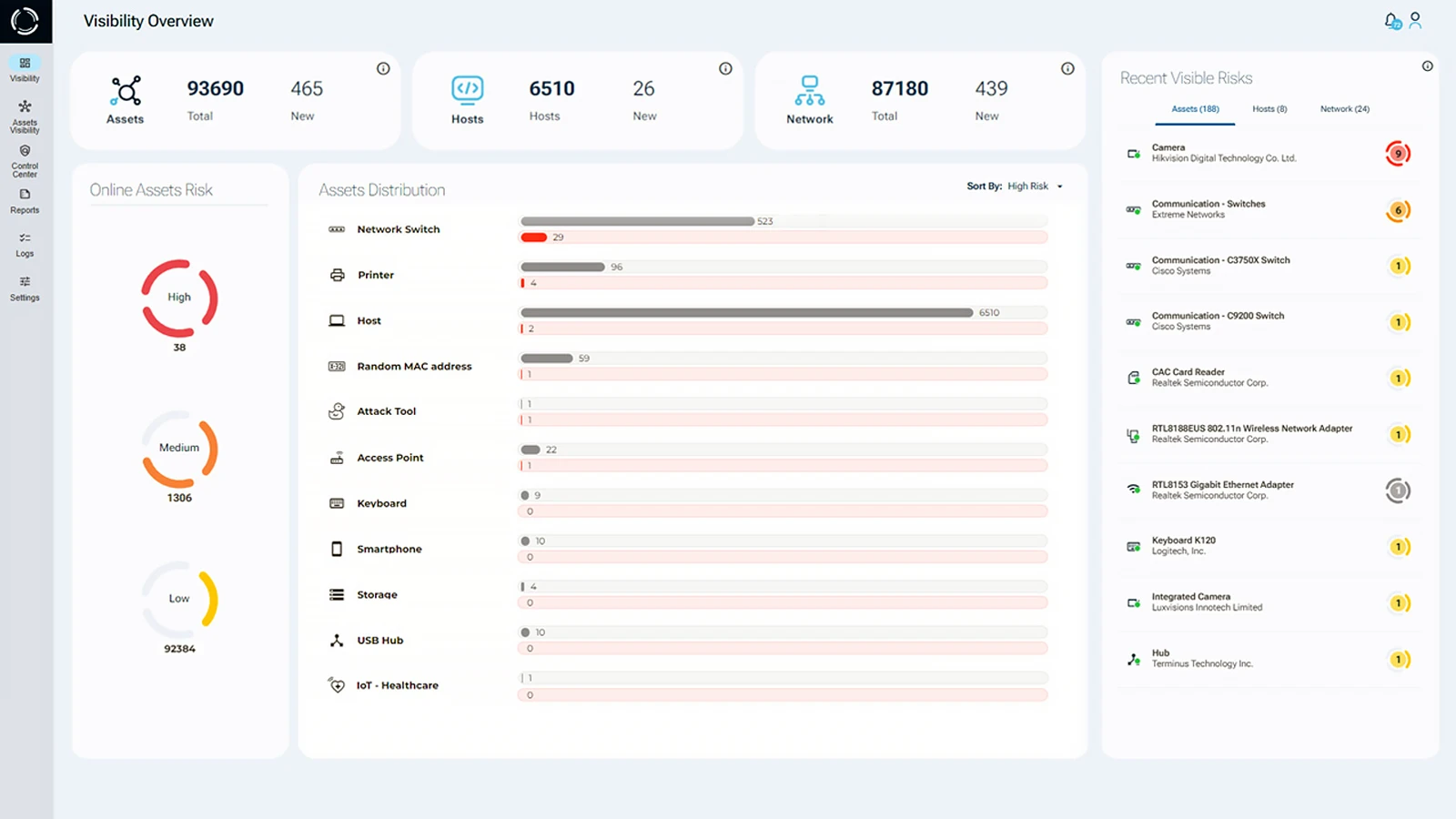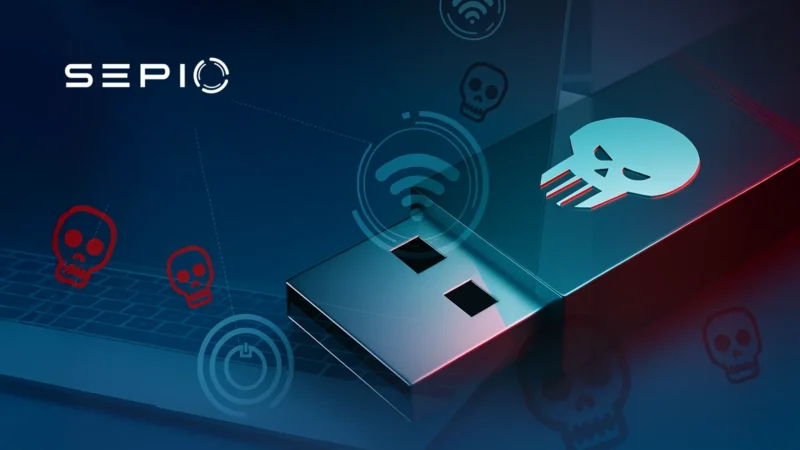What is a BadUSB?
A BadUSB is a harmful USB device. It looks like a normal USB stick but acts like something else, such as a keyboard, USB Rubber Ducky, or network adapter. When plugged into a computer, it can launch attacks, execute USB malware, or take control of the system.
The term “BadUSB” comes from a Black Hat USA 2014 security talk presented by Karsten Nohl and Jakob Lell of SR Labs. Researchers showed that USB firmware can be changed to perform dangerous actions. These actions operate at a low-level code and are not detected by traditional network security tools.
What is a BadUSB attack?
A BadUSB attack involves using a USB device that pretends to be something it is not. Hackers manipulate identity attributes, performing USB device impersonation, to make it appear legitimate. Once connected, the USB can automatically execute USB malware or compromise the system, all without the user’s knowledge.
Real-World BadUSB Attack
A company received a letter with a $50 Best Buy gift card and a USB stick. When plugged in, the USB showed a shopping list. But the company suspected something was wrong and called cyber security experts.
They found it was a BadUSB attack.
Hackers like DarkHotel and RevengeHotels have used similar USB HID attacks to target the hotel industry.
This BadUSB acted like a keyboard. First, it typed out a PowerShell command, then it loaded USB malware to complete the hardware attack. As a result, the company lost data, and their network was shut down.
Other Real-World Cases
- FBI Warnings on Malicious USBs – FIN7 operators mailed USB drives disguised as gifts or promotional items to employees in retail, restaurant, and hotel industries. These drives emulated keystrokes to execute USB malware via PowerShell commands (Ilascu, Bleeping Computer, 2020).
- Rare BadUSB Attack in Hospitality – In 2020, a US hospitality provider was targeted by a rare BadUSB attack leveraging USB HID impersonation to gain unauthorized access to network systems (Cimpanu, ZDNet, 2020).
- Targeting Defense Firms with Ransomware – FIN7 operators used BadUSB devices to target defense contractors, impersonating organizations like Amazon or the US Department of Health & Human Services to trick employees into connecting infected USB drives (Gatlan, Bleeping Computer, 2022).
How BadUSB Cyberattacks Evade Security?
BadUSB cyberattacks target the low-level code that controls device hardware. Most security tools focus on data transfers and ignore low level code. Because no one checks this code, harmful changes go unnoticed. This lets BadUSB attacks bypass traditional defenses.
Compromised USBs can pretend to be trusted devices, such as keyboards, USB Human Interface Devices (HID), or storage drives. Operating systems trust these standard peripherals types and security software does not verify their behavior.
These BadUSB cyberattacks often use small control chips like the Arduino ATMEGA32U4, or the Rubber Ducky. The operating system recognizes these devices as legitimate, allowing them to send commands without raising suspicion.
This creates a serious risk because employees or users may connect BadUSB devices and trigger a hardware cyberattack.
BadUSB Detection Challenges
BadUSB devices often appear as Human Interface Devices (HID), such as keyboards or mouse. Some combine multiple functions, like keyboard and mouse together. This makes them harder to detect.
The use of USB hubs adds another layer of complexity. One port can connect many devices through a hub. This makes it harder to track and identify each device. This makes it more likely that a rogue device won’t be noticed.

Sepio monitors all connected hardware assets in real time. Including Human Interface Devices (HIDs), USB storage, and more. It monitors the physical layer to detect and block USB threats. This stops hardware attack tools from causing harm.
See What You Have Been Missing
Sepio’s Cyber Physical Systems Protection Platform gives you comprehensive control over all your network assets. By using physical layer data, Sepio delivers clear and useful insights. This helps security teams to manage assets faster than ever. Additionally, it also protects against hardware attacks like BadUSB threats that bypass traditional security tools.
A New Dimension of Asset Visibility
Sepio uses physical layer data to find the true source of asset risks. It goes beyond usual monitoring to give you a full view of your asset landscape. Sepio works easily with your existing security tools, making them even more effective. This approach provides practical security, essential for managing risks like BadUSB attacks and USB device impersonation.

Objective, Holistic Asset Intelligence
Sepio creates a unique Asset DNA profile for every connected device. As a result, it provides a trusted view into Cyber-Physical Systems (CPS). This way, you gain accurate, data-driven risk management, which is especially critical for identifying hidden Bad USB’s.
Granular Control and Automated Mitigation
Sepio lets you set detailed policies to control hardware use. You can base policies on risk scores, vendor, or custom tags. If a device breaks the rules, Sepio automatic blocks rogue devices or known attack tools, such as Bad USB’s. It integrates with other platforms such as NACs and SOARs to enforce these actions instantly, without any manual work.
Key Benefits
- Full view of all IT, OT, IoT, and IoXT assets, without probing network traffic
- Automatically blocks rogue network devices, including USB threats.
- Protection against insider threats and supply chain attacks
BadUSB Protection
As more devices connect to networks, it becomes increasingly important to track every device. Therefore, a strong cyber security plan must always monitor all USB ports to stop hardware attack tools from gaining access to your network. By doing this, the risk of a successful BadUSB attack is greatly reduced.
Sepio protects against BadUSB attacks by using physical layer data at the hardware level. Moreover, Sepio accurately identifies and verifies every connected asset, finding fake identities that other security tools miss.
Sepio also monitors connected assets behavior in real time. It flags suspicious actions, such as fake or unusual activity, to detect hardware based threats immediately. Using a Zero Trust Hardware (ZTA) approach, only trusted USB devices are allowed to connect.
With Sepio, organizations not only gain effective defense against USB threats but also achieve full control of their physical attack surface.
Hardware Level Security
Talk to an expert to learn how Sepio can protect your network. In addition, discover how to stop BadUSB attacks by seeing all connected assets. Make sure your hardware is fully protected.
Read the Bad USB Case Study (pdf)





